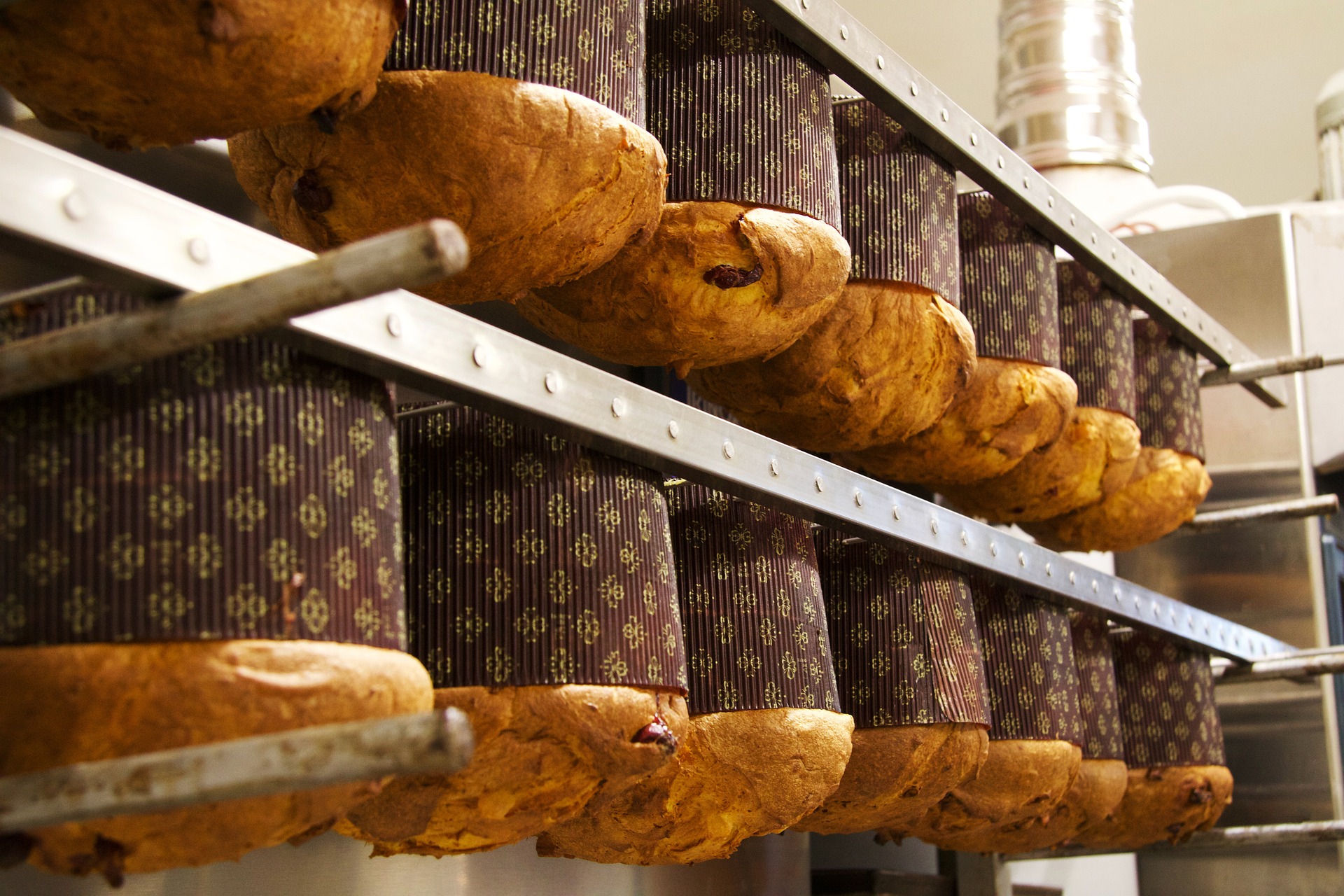Origins and legends about the famous Italian dessert
It is one of the most popular and appreciated sweets all over the World and is never missing in our homes during the winter season, especially the Christmas season. But what is the real history of panettone? Who invented it and what are its origins?
Legends about panettone
There are three main legends related to theorigin of panettone, all full of fascination.
The first is the story of Messer Ulivo degli Atellani, a young man from Milan who got hired as a baker’s boy because he was madly in love with his beautiful daughter Algisa. In an attempt to boost sales, he invented a new cake by adding some butter, honey and dried grapes to a flour and egg mixture and then baking it.
The result was outstanding, and thanks to the success of this first form of “panettone,” Ulivo and Algisa were able to marry and live happily ever after.
The second story about the birth of panettone, perhaps the best known, takes us back to the 15th century, also in Milan. Legend has it that at the court of Ludovico il Moro, a nobleman of the time, at a Christmas Eve banquet, the cook inadvertently burned the cake. Fortunately, a helper working in the kitchen used the leftover yeast bread by adding flour, eggs, raisins, candied fruit and sugar and then baking the resulting dough.
The dessert was a success and was christened “
Pan de Toni
” (later to become our “panettone”), named after the helper who had the brilliant idea, and it spread as a Christmas dish given the day of the year when its creation took place.
Another story about the myth of the birth of panettone is that of Sister Ughetta, a cook at a very poor convent in Milan, who created the famous cake at a Christmas lunch by adding raisins, candied fruit, eggs and sugar to the bread dough. The result was superlative, and word of the goodness of Sister Ughetta’s creation spread quickly, so much so that citizens increased their offerings to the convent in exchange for a taste of the newborn panettone.

Panettone: from the earliest records to the present day
According to historical sources, panettone was born at the end of the 15th century in Milan, when the custom of eating slices of wheat bread obtained by enriching it with sugar, eggs and butter was in force at Christmas. These slices of sweet bread were precisely served by the head of the family to diners only on Christmas Day since compared to traditional wheat flour was more valuable and used only for the more noble population during the rest of the year.
The first documented recipe dates back to 1549, when Ferrara cook Cristoforo di Messisbugo mentions a round, leavened cake from the Milanese areas made with flour, butter, eggs and sugar.

The first definition of panettone, however, is from 1606 and is recorded in the Milanese-Italian dictionary as “panaton,” referring to a large loaf of bread baked at Christmas.
In the 1800s, the recipe was further refined by the addition of yeast and the use of the first molds, bringing it closer to the current one. The custom of sending panettone cakes as thanks for business collaborations also became widespread in those years.
In the 1920s, panettone took the form we all know thanks to Angelo Motta, who took his cue from kulic, a traditional Russian dessert.
Thanks to the advent of kneading machines starting in the early decades of the 1900s, panettone began to be exported all over the world, which further helped to spread this Italian excellence.
Do you want to taste the Italian tradition? In our site you will find
handcrafted panettoni
of all kinds: classic, with chocolate, pistachio, citrus and more!




Visita il nostro e-shop e scopri tanti prodotti a prezzi vantaggiosi!